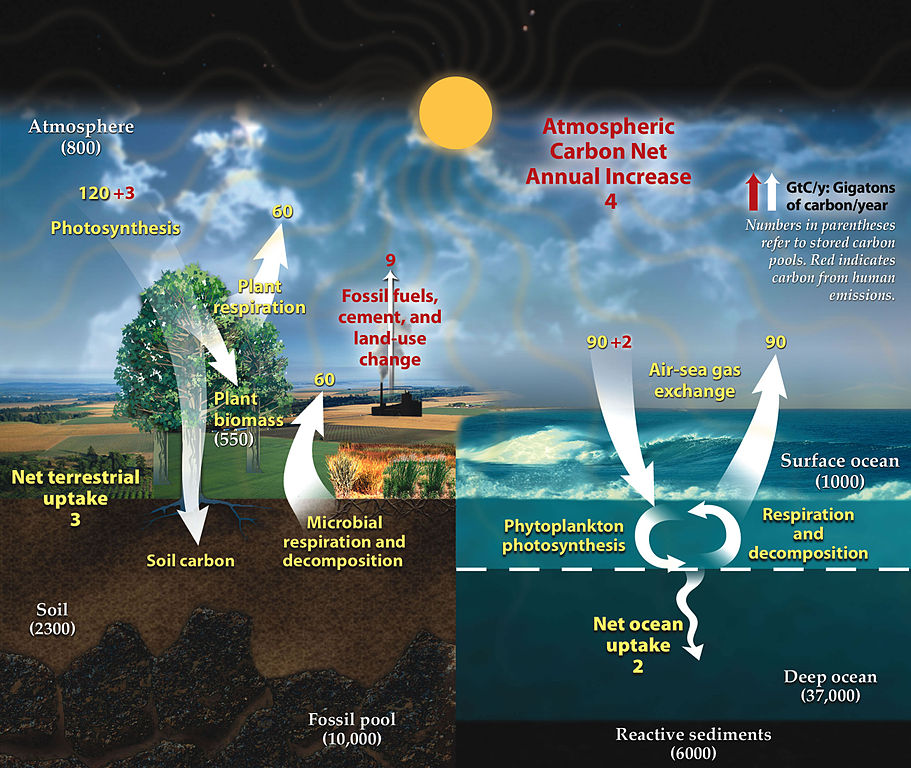Contents
Reading
- PDF (OpenStax)
- 8.3 Carbon Fixation (OpenStax CNX)
Learning Outcomes
- Discuss the main events that occur in the Calvin-Bensen cycle, and tell the cycle must turn six times in order to generate a 6-carbon sugar.
- Explain the process of photo respiration, and describe the environmental conditions that favor this process.
- Discuss the C4 and CAM pathways; explain why C4 plants photosynthesize more efficiently than C3 plants.
- Describe the global carbon cycle.
Light Independent Reactions
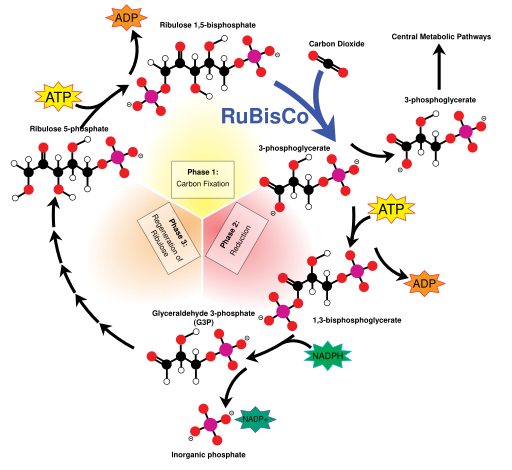
Credit:Mike Jones [CC-BY-SA 3.0]
Leaf Anatomy

Cross-section of a leaf illustrating the layers of cells. Credit: Zephyris [CC-BY- SA 3.0]
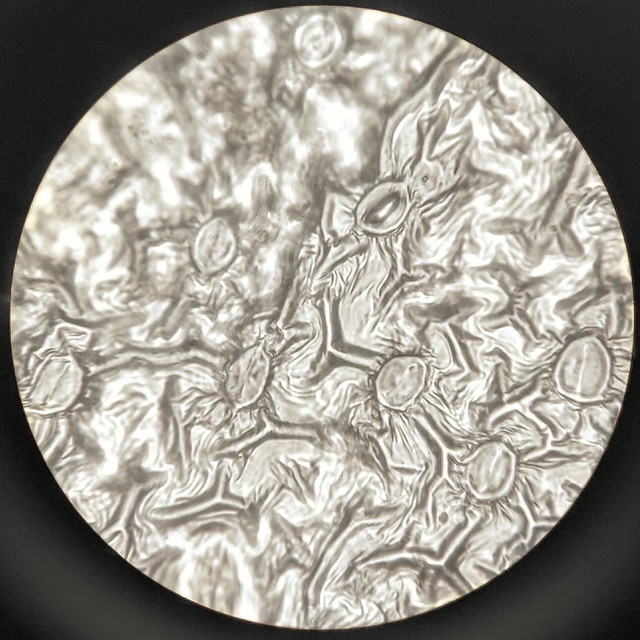
Topographical image of epidermal cells and guard cells of the stomata from the underside of a dandelion leaf. The lip-like stomata open and close to regulate gas and moisture exchange. Credit: jeremy Seto [CC-BY-SA 3.0]
C4 Photosynthesis

C4 Photosynthesis Credit: Kelvinsong [CC-BY-SA 3.0]
Crassulacean acid metabolism (CAM)
CAM (Crassulacean acid metabolism) photosynthesis is a carbon fixation pathway that evolved in some plants as an adaptation to arid conditions. At night, stomata open to permit the entry of CO2 into cells for storage as organic acids in vacuoles. During the day, the stomata close to conserve water and the stored CO2 enters the stroma of chloroplasts to take part int eh Calvin Cycle reactions.
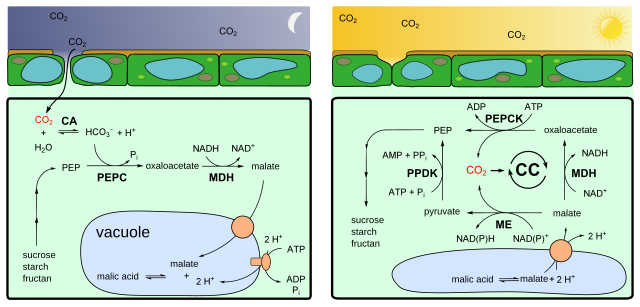
CAM photosynthesis CA: carbonic anhydrase CC: Calvin cycle PEP: phosphoenolpyruvic acid PEPC: phosphoenolpyruvate carboxylase PEPCK: phosphoenolpyruvate carboxykinase MDH: malate dehydrogenase ME: malic enzyme (malate dehydrogenase) PPDK: pyruvate, phosphate dikinase
The Great Oxygenation Event
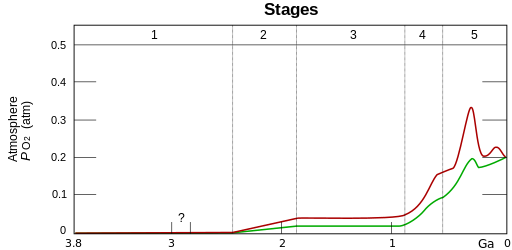
Two estimates of evolution of atmospheric O2. The upper red and lower green lines represent the range of the estimates. Stage 1 (3.85–2.45 Ga) represents the primordial reducing atmosphere. Stage 2 (2.45–1.85 Ga) coincides with the emergence of oceanic cyanobacteria where O2 was being absorbed by the oceans and sediment. O2 escaped the oceans during Stage 3 (1.85–0.85 Ga). O2 sinks filled in Stage 4 (0.85–0.54 Ga ) and Stage 5 (0.54 Ga–present) leading to atmospheric accumulation. Credit: Loudubewe [CC-BY-SA 3.0]

Banded iron formations in 2.1 billion year old rock illustrate the oxidation of dissolved oceanic iron that precipitated in response to accumulating O2 concentrations. Credit: André Karwath aka Aka [CC-BY-SA 2.5]




